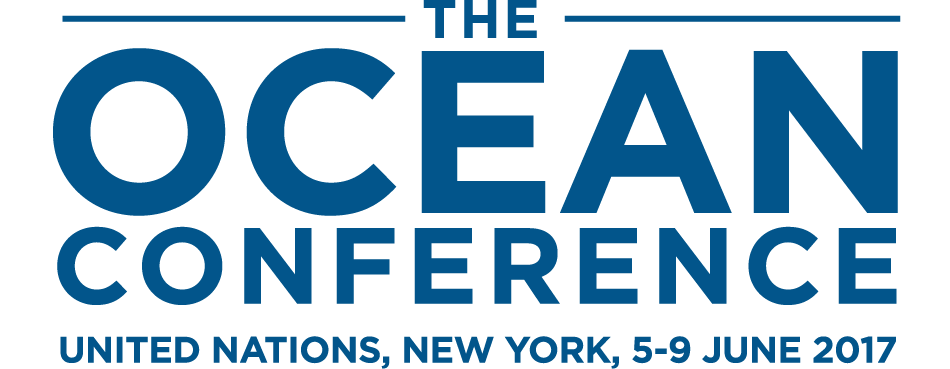Daily report for 7 March 2018
1st Part of the 24th Session of the International Seabed Authority
On Wednesday, the Council of the International Seabed Authority (ISA) continued consideration of the draft regulations on the exploitation of deep-seabed minerals in an informal format. Discussions focused on:
- the payment mechanism, including options for a revenue- or profit-based payment scheme;
- the role of sponsoring states, the ISA and contractors, including questions of liability; and
- the role and legal status of standards, recommendations and guidelines.
DRAFT EXPLOITATION REGULATIONS
PAYMENT SCHEME: Council President Myklebust invited delegates to make additional interventions on the payment mechanism, including on three options for a payment system (mass-based, revenue-based, and profit-based) and the potential establishment of a working group. Responding to further questions, Richard Roth, Massachusetts Institute of Technology (MIT), emphasized that, once mining commences, the flow of money in the payment system will depend upon which payment system is selected, noting that profit calculations require specific rules. He indicated that licensing fees could be utilized, subject to rules developed by the ISA, for heritage or recreational sites; and that the models need to be adapted to reflect differences on the cost of minerals other than nodules. He also remarked that additional expertise is needed for valuing the common heritage. On the UK’s question on international accounting standards, Roth noted that: existing practices reflect specific national practices; the ISA would be responsible for selecting preferred models or a combination of rules; and this topic requires further reflection.
Algeria, for the AFRICAN GROUP, supported by GRULAC, emphasized that the payment mechanism should: be guided by UNCLOS; be fair to both contractors and the ISA; provide means for defining compliance by the contractor; and ensure that rates of payment are in the range of those prevailing in the land-based mining sector. He called for shielding states from the adverse effects of price reductions of minerals caused by activities in the Area, and for funding costs associated with closure and decommissioning.
TONGA suggested: developing a special section on audit and inspection measures used for the valuation of equipment; providing certainty and predictability in developing a payment mechanism, traditional or other; and striking a balance between environmental protection and economics. Stressing that the payment regime must be clear, transparent, and easy to administer and implement, SINGAPORE called for: addressing polymetallic sulphides and ferromanganese crusts in the development of a financial model; and taking into account the relationship between the type of contractor and costs.
NORWAY called for balancing the needs of common heritage, represented by the Authority, and of contractors. The REPUBLIC OF KOREA considered varying technological requirements for mining different minerals, and requested: ensuring coherence regarding data collection and definitions in the regulations; and considering in the Legal and Technical Commission (LTC) the exploitation code separately from exploration rules.
BELGIUM called for a fair, transparent and balanced payment mechanism, containing incentives for lowering environmental impacts and allowing the development of environmentally friendly technologies. BANGLADESH proposed consideration of: benefit-sharing rules in developing a payment mechanism; non-confidentiality rules; and contractors’ financial competency when considering application processes, as contractors should not be allowed to continue activities until they have fully restored environmental damage.
Noting the existence of externalities in deep-seabed mining, the DSCC queried whether more detailed information on the methodology used will be provided, as well as the terms for servicing capital flows. IUCN questioned when the Authority will address environmental costs, if they are not considered in the current model. Roth noted that: the cost of debt servicing was included in the model, as were costs related to prefeasibility and feasibility studies, inviting views on any potential underestimations; externalities have not been addressed; and running a multitude of scenarios to map out different royalty or profit rates is the way forward.
Upfront costs: The NETHERLANDS enquired whether upfront costs in the MIT’s models have considered existing legal obligations under UNCLOS on exploration, particularly related to testing mines and processing systems. Roth replied that the presented models include upfront costs on physical mining such as pumping slurry water, based on existing rules, suggesting further research to break down costs in detail. CANADA called for more analysis on the upfront costs.
Options for a payment system: The AFRICAN GROUP favored a hybrid of royalty-based and profit-based payment system. FRANCE supported a combination of the three models with “real benefits,” underscoring the need to avoid exploitation that incurs losses for land-based producers and to factor in environmental considerations. CANADA preferred a hybrid approach to balance industry interests and benefit-sharing obligations.
Calling for drawing on discussions in other fora, AUSTRALIA emphasized that royalties “need to be one of the major elements on the table,” as they are mentioned with regard to financial terms of contracts under the 1994 Implementing agreement. NORWAY favored a royalty-based mechanism, because it is simple, not overly burdensome, and already utilized at the national level. JAPAN preferred a revenue-based mechanism, acknowledging the need for contractors to comply with reporting obligations and cautioning against imposing excessive financial constrains on them. CHINA noted that: a model exclusively based on royalties may not be helpful for a fair payment mechanism, and may create potential investment disincentives; incentives should be available for high-risk activities; and the common heritage principle should be implemented as enshrined in UNCLOS.
TONGA recommended: exploring other options for consideration by the Council at the next session, although there is merit in the revenue-based model; and further elaborating reference to “special circumstances” in the draft regulations on payment of royalties. SINGAPORE favored: developing a transitional approach, without disincentives for industry, where a royalty-based mechanism guarantees a minimum flow of resources until more sophisticated know-how is developed to take into account profitability; and further analyzing whether the options of fixed-fee, revenue-based and profit-based models can meet the objectives of a payment regime as set out in UNCLOS.
The UK expressed doubts over the credibility and workability of the profit-sharing model, bearing in mind the difficulty of determining profits, and questioned how the Authority’s costs would be addressed in this model. INDIA suggested relating annual fixed fees and royalties to the active mining area, rather than the total size of the contract area, rationalized by the value of the contained metals by square meter. ARGENTINA noted the wide range of empirical evidence on mechanisms for land-based mining companies to make payments.
Noting that major environmental damage that would be considered irreparable should be prevented, CHILE suggested royalties progressively imposed at 5-15% of sales, depending on market value. NORWAY clarified that royalties ranging from 5-15% used nationally refer to the oil and gas sectors, which have different profitability than deep-seabed mining.
Establishment of a working group: The AFRICAN GROUP supported: with CHINA, BELGIUM and NORWAY, establishing an ad hoc working group, to work with MIT; and involving the Finance Committee, particularly in considering administrative fees. TONGA and FRANCE supported an expert group, with AUSTRALIA underscoring the importance of a formal link to the current process and a mandate to make recommendations to the Council. ARGENTINA considered it premature to formally establish a working group. BRAZIL and JAMAICA recommended instead considering the establishment of the ISA economic planning commission foreseen under UNCLOS. The UK pointed to an option for the LTC and Finance Committee to meet in an open setting.
ROLE OF SPONSORING STATES: The AFRICAN GROUP noted that the sponsoring state should assist the Authority in exercising control of activities in the Area, taking into consideration the precautionary approach, best environmental practices, and the obligation to ensure recourse to compensation for damage from pollution. He suggested sharing information aimed at facilitating compliance.
TONGA called for clear roles and responsibilities related to monitoring and enforcement, and for cooperation between the ISA and sponsoring states. AUSTRALIA welcomed references to sponsoring states’ national legislation, noting that the system should also help contractors decide which sponsoring state to approach. BELGIUM stressed the need for: a balanced relationship between the ISA and contractors; clarity on monitoring rules to avoid “sponsor shopping”; and more attention to environmental regulations. CHINA pointed to due diligence, arguing that sponsoring states that have taken necessary and appropriate measures should not be held responsible for contractors’ misconduct. POLAND underscored equal opportunities, proper legal frameworks, and uniform and non-discriminatory provisions. The UK noted the importance of keeping sponsoring states informed, and the relevance of examples from the fisheries industry on monitoring.
JAMAICA drew attention to the Area’s unique regime and the need for coherent rules on the responsibility of contractors, sponsoring states and the ISA. JAPAN asked for greater clarification of sponsoring states’ obligations, and on their relationship with the ISA and other stakeholders. The DSCC urged developing rules on transparency and liability.
Termination: The REPUBLIC OF KOREA noted that a longer period for sponsorship termination for exploitation could impose unnecessary burdens and obligations on sponsoring states. AUSTRALIA preferred not to allow automatic sponsorship renewal in cases of environmental harm, highlighted the role of flag and coastal states, and suggested the ISA should forward contractors’ annual reports to sponsoring states to increase transparency. GERMANY underscored the need to: revise the roles, responsibilities and competencies of the Authority and the sponsoring states regarding inspection and liability; with the UK, consider the issue of multiple sponsorship; create a level-playing field for contractors from different states; ensure consistency between national legislation and ISA regulations; and for the ISA regulations to supersede national legislation, when necessary
TONGA, GERMANY, and CHINA supported convening a workshop for sponsoring states, contractors and the Authority. SINGAPORE, with the UK, noted that the workshop should be open also to port, flag and coastal states.
STANDARDS, RECOMMENDATIONS AND GUIDELINES: JAPAN preferred for legally binding regulations to be adopted by the Council, and non-legally binding standards or guidelines to be contained in a separate document and not be adopted by the Council. BELGIUM, supported by the DSCC, recommended that environmental standards and thresholds should be legally binding. The NETHERLANDS suggested that the regulations should contain provisions to facilitate the future adoption of guidelines, standards or recommendations to avoid having to amend core regulations; and that recommendations should be adhered to. CHINA recommended balancing predictability and flexibility in formulating standards and regulations, noting that they should be approved by the Council, but some will merely be recommendations. AUSTRALIA pointed out that the LTC makes recommendations to the Council. SOUTH AFRICA preferred an appropriate mix of performance and procedure standards, and for guidelines to be developed by consensus. UGANDA emphasized the importance of legally binding regulations. The UK stressed that relevant standards, applicable to all, may be incorporated in contracts to level the playing field.
IN THE BREEZEWAYS
On Wednesday, the Council continued to mull over the complexities of a possible payment system. A participant joked, “no time to catch our breath,” rushing to a lunch side-event at which the ISA Secretariat shared a draft strategic plan for 2019-2023 to be formally tabled during the Assembly meeting in the summer, to frame the role of the Authority “in a changed world.” Praising the Secretariat’s initiative to make the draft available online for stakeholder consultations, a delegate reflected on the challenges for the ISA to share the benefits of deep-seabed mining with humankind against the backdrop of the Sustainable Development Goals. Civil society representatives, on the other hand, compared the reference, in the draft mission statement, to “highest practicable standards” of protection of the marine environment with UNCLOS provisions on the need for “effective” environmental protection in the Area. “Power comes with responsibilities, and requires vision and adequate resources,” surmised another participant.
-->
Specific funding for coverage of the Ocean Conference - June 2017, has been provided by the
XXX, XXX, and XXX
-->
IISD Reporting Services is a division of the International Institute for Sustainable Development (IISD).
Earth Negotiations Bulletin (ENB), ENB+, and Knowledge Management for Sustainable Development
are branches within IISD Reporting Services.
© 1992-2018, IISD Reporting Services. All rights reserved.







